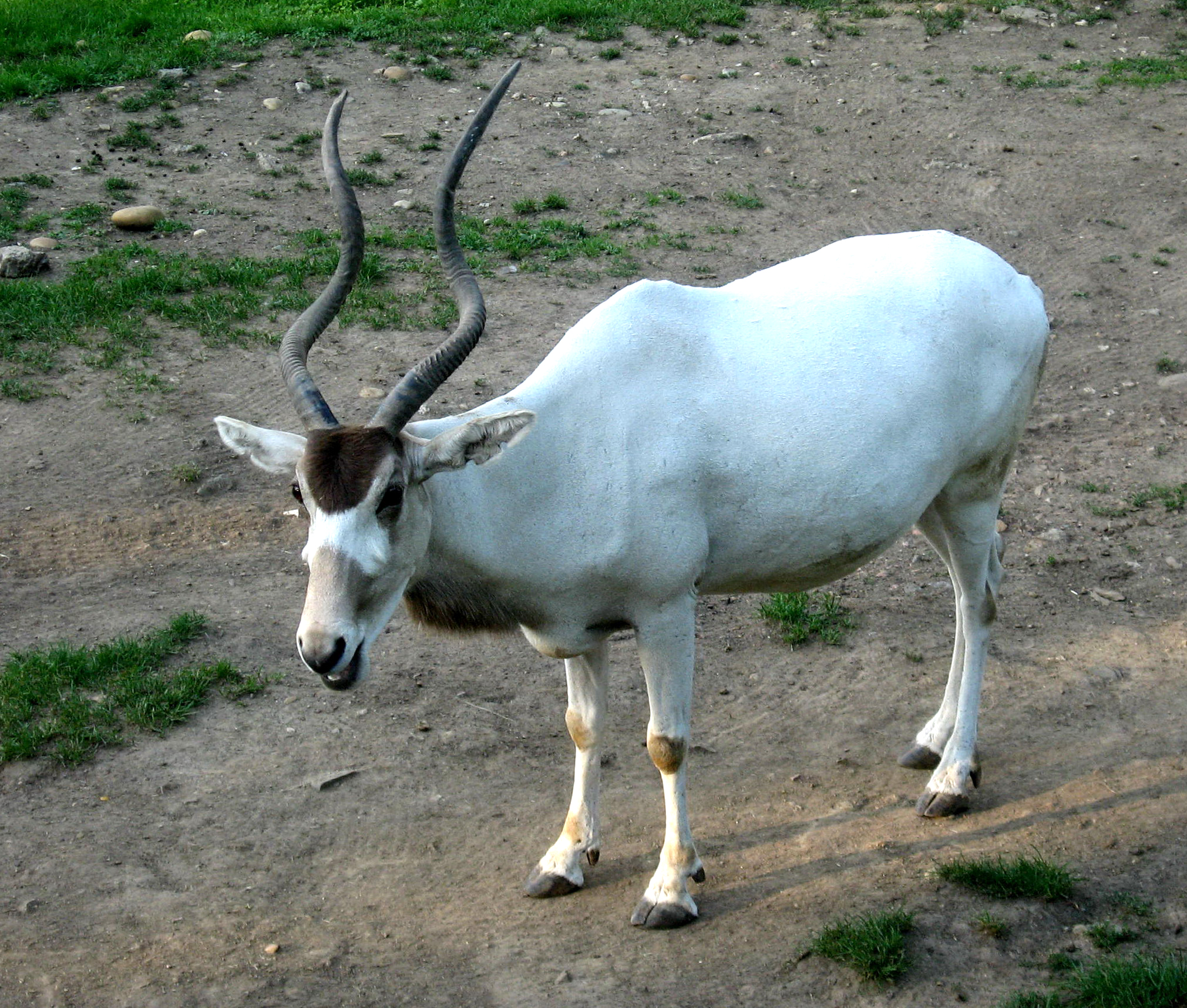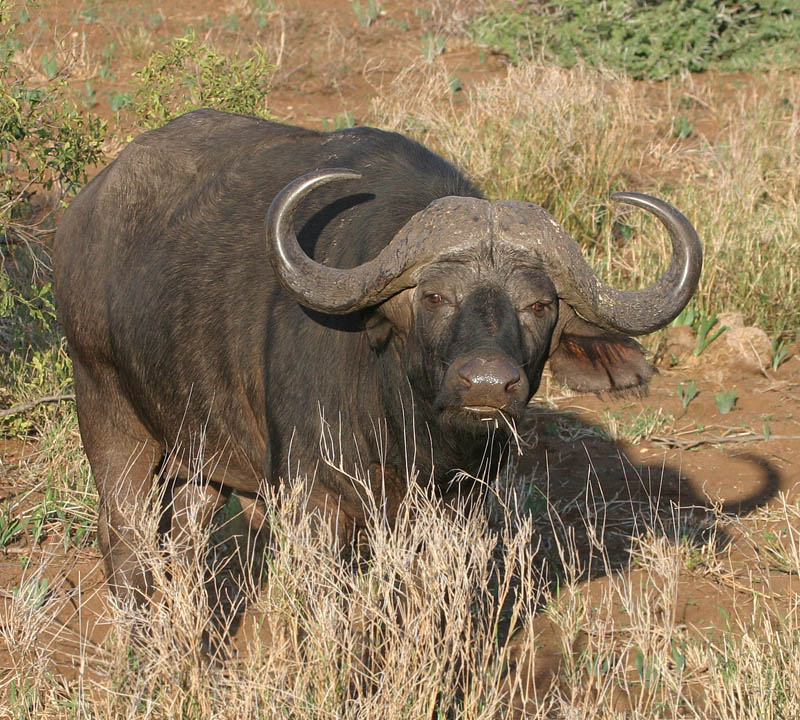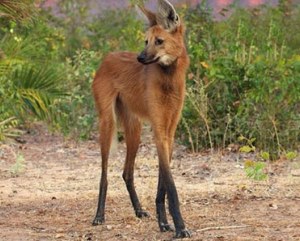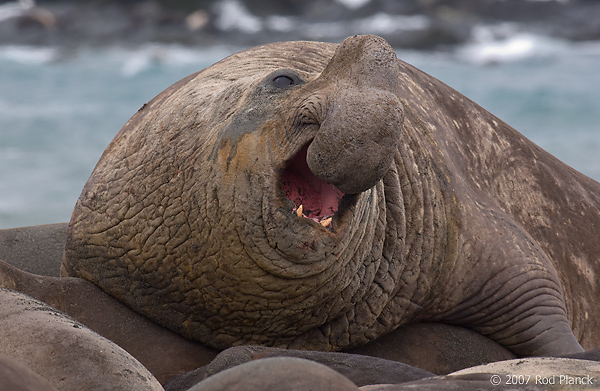Animal: Addax
Overshadowed by: Thompson's gazelle and Amur leopard which is supposedly the 2nd most endangered animal with 40 left.
Classification: Mammal
Endangered status: Critical - 3 left in the wild
Diet: Grass, melons, and scrubs they can find
Habitat: Sahara Desert
Size: (shoulder height) 90-115 cm weight 60-125 lbs
Scientific name: Addax nasomaculatus
Predators: Lions, African wild dogs, leopards, cheetahs, and hyenas
Fun facts: Addax is the 2nd most endangered animal on earth.
Wednesday, August 31, 2016
Sunday, August 28, 2016
American Bison vs. Water Buffalo
Animals: American Bison and Water Buffalo
Diet (American Bison): Grass and shrubs
Diet (Water Buffalo): Grass, shrubs, and aquatic plants
Range (American Bison): Mostly in U.S. national parks
Range (Water Buffalo): Wild water buffalo live only in wild life reserves in Asia.
Other differences: Water buffalo spend most of their time mostly submerged.
Diet (American Bison): Grass and shrubs
Diet (Water Buffalo): Grass, shrubs, and aquatic plants
Range (American Bison): Mostly in U.S. national parks
Range (Water Buffalo): Wild water buffalo live only in wild life reserves in Asia.
Other differences: Water buffalo spend most of their time mostly submerged.
Monday, August 22, 2016
Narwals
Animal: Narwals
Overshadowed by: Fictional Narwals
Classification: Mammal
Endangered Status: Near threatened
Diet: Fish, squid, and shrimp
Size: 13-16 feet long and weigh up to 1.8 tons
Habitat: Narwals are often found in the arctic waters of the North Atlantic near Russia and Greenland.
Scientific name: Monodon monoeros
Predators: Polar bears, and Orcas
Fun Facts: Can live up to 50 years, can dive up to 5,000 feet, and their tusk is actually a large tooth.
Overshadowed by: Fictional Narwals
Classification: Mammal
Endangered Status: Near threatened
Diet: Fish, squid, and shrimp
Size: 13-16 feet long and weigh up to 1.8 tons
Habitat: Narwals are often found in the arctic waters of the North Atlantic near Russia and Greenland.
Scientific name: Monodon monoeros
Predators: Polar bears, and Orcas
Fun Facts: Can live up to 50 years, can dive up to 5,000 feet, and their tusk is actually a large tooth.
Sunday, August 21, 2016
Maned Wolfs
Animal: Maned Wolf
Overshadowed by: Gray wolfs
Scientific name: Chrysocyon brachyurous
Classification: Mammal
Size: 51 lbs and 35 in tall
Endangered status: Near threatened
Diet: Small rodents, insects, reptiles, and birds
Habitat: Mainly in the large area of open woodlands and savannah.
Predators: Wild Dogs
Fun Facts: Unlike other wolves, the maned wolf is a solitary animal, the largest canid in South America.
Overshadowed by: Gray wolfs
Scientific name: Chrysocyon brachyurous
Classification: Mammal
Size: 51 lbs and 35 in tall
Endangered status: Near threatened
Diet: Small rodents, insects, reptiles, and birds
Habitat: Mainly in the large area of open woodlands and savannah.
Predators: Wild Dogs
Fun Facts: Unlike other wolves, the maned wolf is a solitary animal, the largest canid in South America.
Saturday, August 20, 2016
Southern Elephant Seals
Animal: Southern Elephant Seals
Overshadowed by: Harbor/Spotted Seals and Sea lions
Classification: Mammal
Size: Up to 20 feet long and 8,800 pounds
Endangered Status: Right in the middle
Diet: Fish and squid
Habitat: Islands near the Arctic Circle and South Georgia Island in the South Atlantic Ocean
Scientific name: Mirounga leonina
Predators: Killer whales and larger sharks such as Great Whites and Greenland Sharks.
Fun Facts: Can dive up to 4,921 feet and hold their breath for up to 2 hours, and is the largest of all seals.
Overshadowed by: Harbor/Spotted Seals and Sea lions
Classification: Mammal
Size: Up to 20 feet long and 8,800 pounds
Endangered Status: Right in the middle
Diet: Fish and squid
Habitat: Islands near the Arctic Circle and South Georgia Island in the South Atlantic Ocean
Scientific name: Mirounga leonina
Predators: Killer whales and larger sharks such as Great Whites and Greenland Sharks.
Fun Facts: Can dive up to 4,921 feet and hold their breath for up to 2 hours, and is the largest of all seals.
Wednesday, August 17, 2016
Wild Boars vs. Warthogs
Animals: Warthogs and Wild Boars
Diet (Wild Boars): Any vegetation they can find
Diet (Warthogs): Mainly grass, fruit, berries, roots, and insects but also occasional small mammals and reptiles
Range (Wild Boars): They are very common and can be found almost anywhere.
Range (Warthogs): Mainly found on the African savanna.
Other Differences: Boars are nocturnal, boars have thick coats. Warthogs are smaller and lighter, and Warthogs have larger tusks.
Diet (Wild Boars): Any vegetation they can find
Diet (Warthogs): Mainly grass, fruit, berries, roots, and insects but also occasional small mammals and reptiles
Range (Wild Boars): They are very common and can be found almost anywhere.
Range (Warthogs): Mainly found on the African savanna.
Other Differences: Boars are nocturnal, boars have thick coats. Warthogs are smaller and lighter, and Warthogs have larger tusks.
Greenland Sharks
Animal: Greenland Sharks
Overshadowed by: Great White Shark
Classification: Fish
Size: 7 meters long
Endangered status: Believed to be Healthy
A.K.A: Sleeper Sharks
Scientific name: Somniosus microcephalus
Diet: Anything they can sink their teeth into.
Habitat: Arctic Waters
Predators: Parasites that feed off their eyes.
Fun Facts: Can live up to 400 years due to slow movement and slow metabolism, their meat is poisonous, move at under 1 mile per hour, and can dive up to 7218 feet below sea level.
Overshadowed by: Great White Shark
Classification: Fish
Size: 7 meters long
Endangered status: Believed to be Healthy
A.K.A: Sleeper Sharks
Scientific name: Somniosus microcephalus
Diet: Anything they can sink their teeth into.
Habitat: Arctic Waters
Predators: Parasites that feed off their eyes.
Fun Facts: Can live up to 400 years due to slow movement and slow metabolism, their meat is poisonous, move at under 1 mile per hour, and can dive up to 7218 feet below sea level.
Subscribe to:
Comments (Atom)








